Matt Cutts once said, “Everybody thinks their website is above average.” I suffered from that delusional disorder as well; some of my articles were getting hundreds of social media shares!
In fact, I became so infatuated with my content that one day I aimed to get links from .gov sites to one of my pieces. Yeah, I was that naive!
After hundreds of customized outreach emails and two negative replies, I finally understood that I wouldn’t get a .gov link anytime soon. That was when I started to chase .edu links, the second-best choice after those elusive .gov links.
I didn’t want links that I could build on my own because their SEO value is zero. I didn’t want links from .edu pages with thousands of spammy comments or weak .edu blogs.
I wanted to earn my .edu links because I knew that Google loves earned links. This article shows what I did to earn a valuable Stanford.edu link and what you can do to get one for your own site.
But first, here’s the stanford.edu page that includes my link.
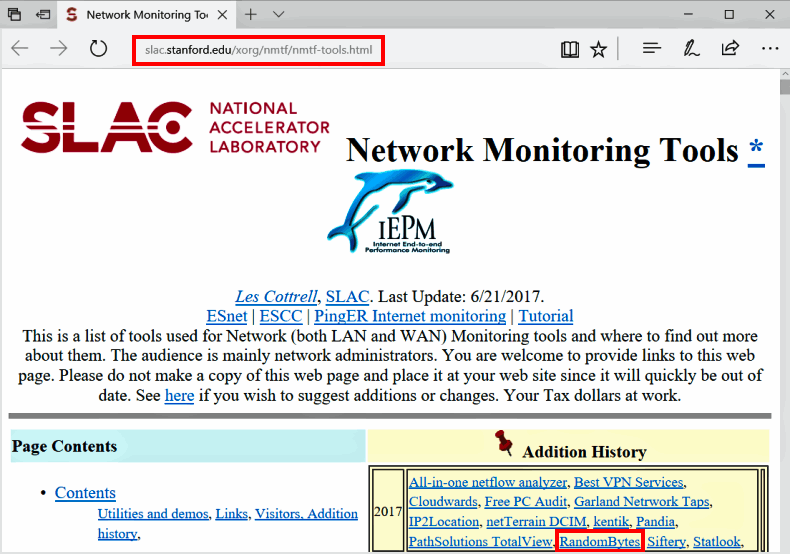
The link points to an article, which describes a useful website monitoring tool I’ve built. You can read the article here.
Let’s see some of the benefits brought by this link, according to Ahrefs.
First, I noticed a huge, sudden Ahrefs Rank boost. Randombyte went from 10,250,793 to 2,435,571 in a single day! (smaller values are better). Take a look at the picture below to see this dramatic change.
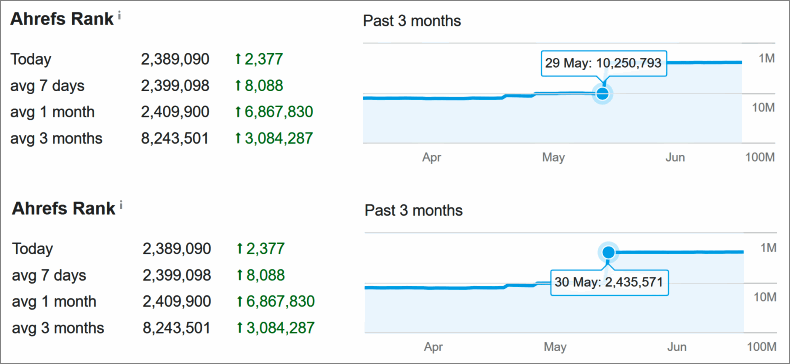
What about keyword rankings improvements? Here are some of the results I noticed a few weeks after getting that link.
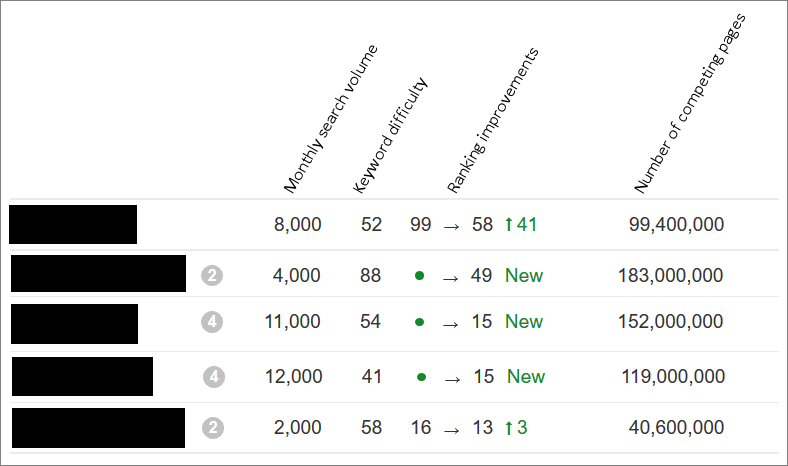
The biggest winners are two Google-related keywords, which have monthly search volumes of 11,000 and 12,000. The keywords weren’t even in the top 100 a month ago, and now this site ranks #15 for both of them.
Several other keywords, which have hundreds of monthly searches, have achieved first-page Google rankings.
Disclaimer: Your results may vary. Website rankings and traffic depend on site structure, other content marketing activities, Google’s algorithm changes, and more.
What about referral traffic? The Stanford link has brought 81 people so far. That’s close to three website visitors per day, and that number continues to grow, even though it’s been about a month since the link was built. The backlink is placed at the top of the page, which helps a lot.
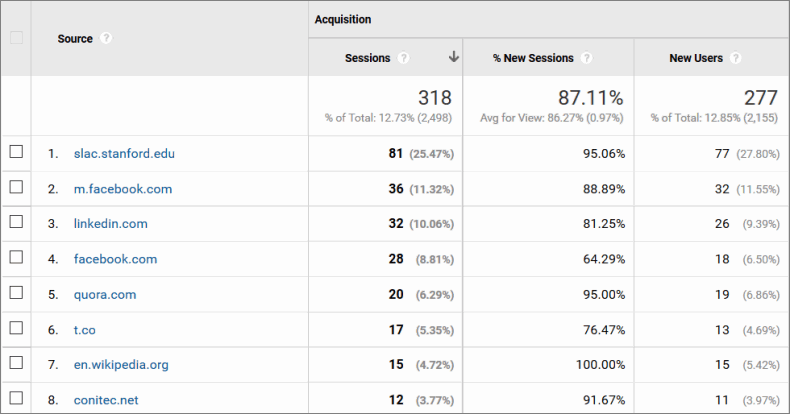
The overall website traffic has doubled compared to the previous months.
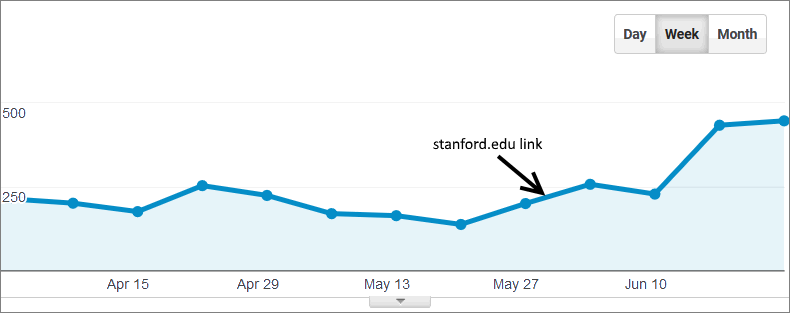
The data clearly shows the potential effect of a strong, “real” .edu link. So, how can you get one of these juicy backlinks for your own site?
Everything starts with having a very valuable resource. You may have read about creating painfully detailed guides around your targeted topics/keywords. The sad truth is that most webmasters won’t be too inclined to promote that type of content. Sure, if they see a great guide, they may bookmark it, but they won’t link to it.
A better idea is to create a useful software application, which has a much higher perceived value. If you find webmasters who have created resource pages that include tools like yours, the response rate will be huge!
Your app doesn’t have to be very complex, but it must be polished and fully functional. I understand you may not be a programmer, but it is easy to hire one. Head over to Upwork, and you will have access to thousands of the world’s best programmers at affordable rates.
Choose to build a tool related to your industry and is very useful. To get ideas, examine the best-paid industry applications and then create a 100% free tool with a much smaller set of features.
For example, if you work in the graphics design industry, use Adobe Photoshop as your paid tool reference, then build a free tool similar to Microsoft Paint. I guarantee you will have lots of link-building opportunities!
Once your tool is ready, it’s time to start the outreach process. Here’s the email I sent to get that precious link.
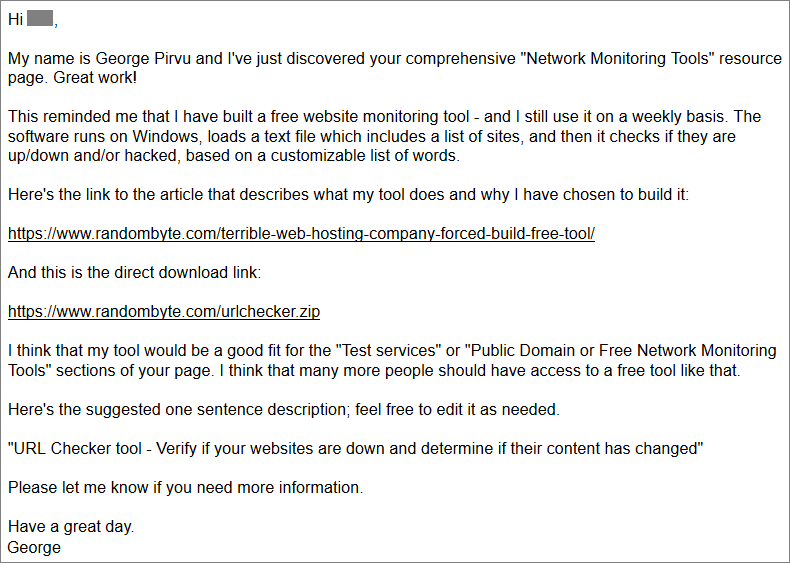
The webmaster was very prompt; the link to my tool was added in less than two days. It is much easier to get backlinks if the webmasters encourage people to submit their apps.
But how do we discover these opportunities? Here are several search strings to input straight into Google or (my favorite method) into Scrapebox:
- “niche links” site:edu
- inurl:niche links site:edu
- intitle “niche links” site:edu
- “niche tools” site:edu
- inurl:niche tools site:edu
- intitle “niche tools” site:edu
- “niche” + inurl:links site:edu
- “niche resources” site:edu
- “niche” + inurl:resources site:edu
- “niche” + “useful resources” site:edu
- “niche” + “other resources” site:edu
- “niche” + “resources” site:edu
- “niche” + “helpful links” site:edu
- “niche” + “helpful resources” site:edu
- “niche” + “resource” + “email” site:edu
- “niche” + “resources” + “contact me” site:edu
Don’t forget to replace “niche” with your targeted keyword.
Here’s an example showing the first search results page using the following search string:
intitle:”network monitoring” site:edu
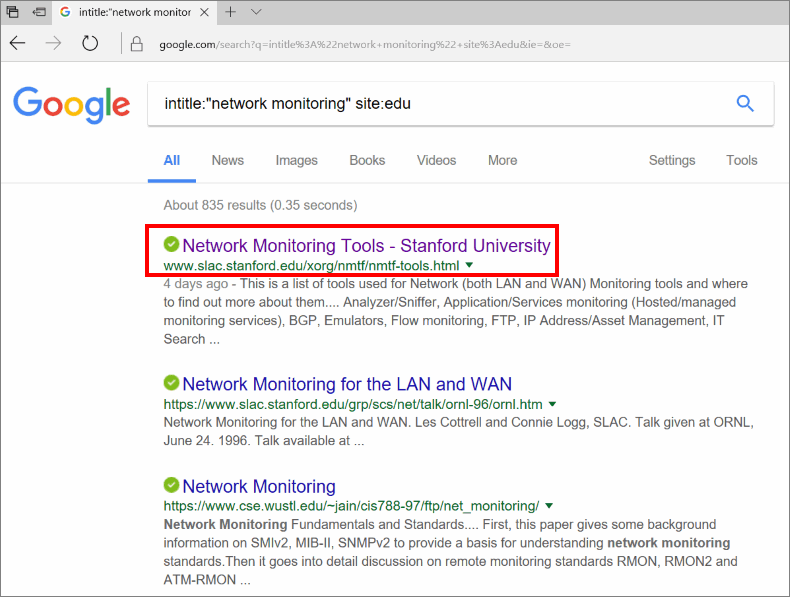
Doing research in Scrapebox is much faster, of course. I gathered a list of 555 potential sites in less than a minute.

As you can imagine, there are many powerful link-building opportunities in this list of URLs. I chose to get a single .edu link for this case study.
Obviously, if you have built a useful tool, don’t limit your searches to .edu domains. There are lots of powerful non-edu domains out there, and their SEO value is massive.
Simply remove the “site:edu” part at the end of each search string to get access to all the domains. In my case, the search string below has returned more than 1,000 unique link-building opportunities.
intitle:”network monitoring”
Don’t forget to use all the search strings above. Then, remove the duplicate URLs in Excel. I promise you won’t run out of potential link-building candidates anytime soon.
Conclusion
An old Chinese proverb says, “Be not afraid of growing slowly; be afraid only of standing still.” So, code a small application or pay a developer to build an app that will make people’s lives easier, and then show it to the world.
It took me 5-6 hours to code the tool, and less than an hour to discover the Stanford.edu link opportunity and send my personalized email. I am confident that if you follow my steps, you can replicate my success.
Good luck!

